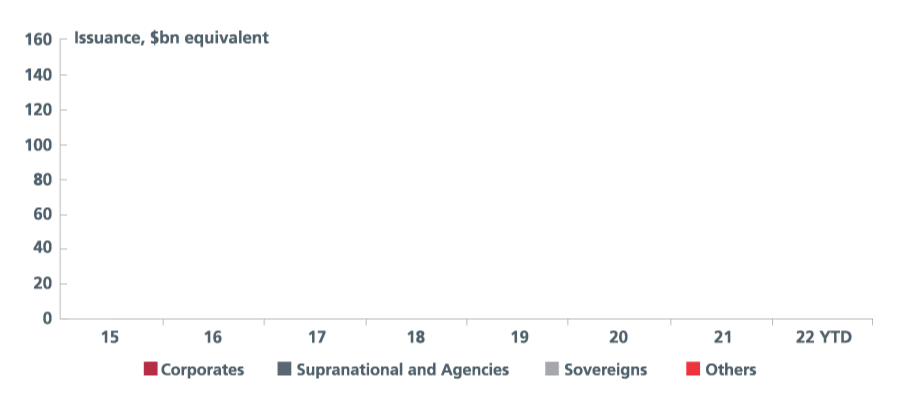The green bond market was a major focus at COP27 with companies and countries discussing ways to enhance the market for bonds linked to projects deemed environmentally friendly. According to Climate Bonds Initiative’ Market Intelligence, the market for green, social, sustainability, sustainability linked (SLB) and transition bond (GSS+) volumes hit USD152.3bn in Q3 2022, a decline of 35% compared to Q2 2022, and 45% compared to Q3 2021. The current global backdrop contributed to the drop in issuances.
Asian issuers are an important part of this bond market; total issuance was close to US$140 billion in 2021.1 While corporates tend to dominate the supply, supranationals such as the Asian Development Bank are frequent issuers. Furthermore, Asian sovereigns are also issuing GSS bonds in both hard and local currencies; Singapore’s SGD 2.4 billion inaugural sovereign green bond was issued in Aug 22.
In all, from start of the year till July, Asian issuers comprised over 20% of total green issuance and around 30% of corporate green issuance, reflecting the growing importance of this market.
Going green, however, presents several challenges. A major issue is the lack of a standard ESG taxonomy. The creation of a new standard-setting board, the International Sustainability Standards Board (ISSB), in late 2021 should address this gap by offering transparent, reliable, and comparable reporting by companies on climate and other ESG matters. This would provide investors a complete overview of a corporate’s sustainability practices as well as the risks and opportunities. That aside, we believe that Asia’s sustainable bond market will continue to grow given the significant climate changes confronting the region, and present investors with even more opportunities going forward.














